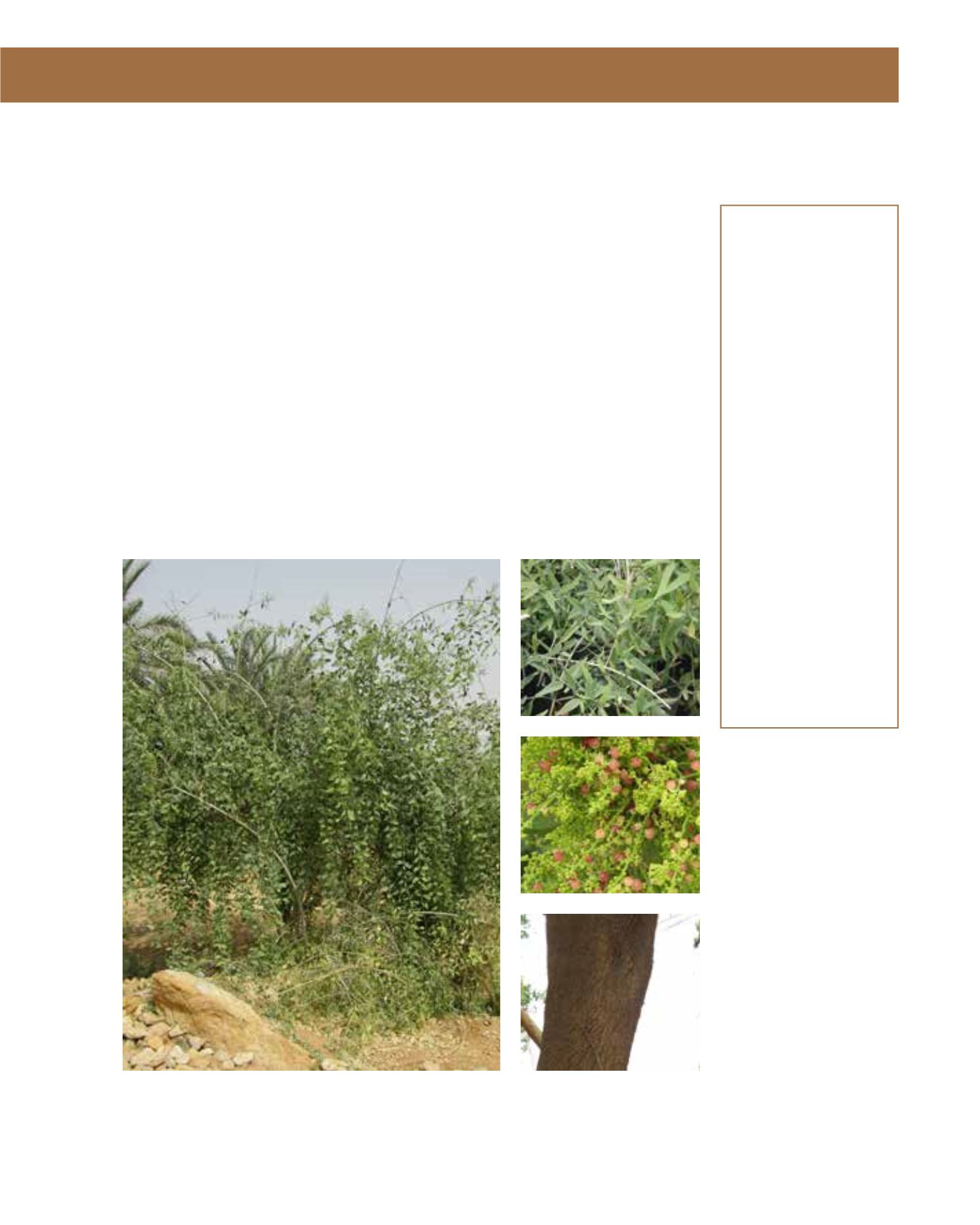

GENERAL
Origin
:
sub-tropical,
tropical, arid
Humidity
:
extremely arid,
very arid, semi-
arid
Propagation :
sowing and
pricking out
Maintenance :
low
CONDITIONS
Urban climate :
resistant
Dessication :
resistant
Stagnant water :
resistant
Irrigation
:
low, none
Salinity/ppm :
very high (20000
ppm)
Hardiness
:
+3°C
SHAPE
Type
:
shrub, tree
Height
:
3 m-7 m
Spread
:
3 m-6 m
Foliage
:
evergreen
FLOWER
Colour
:
pastel green
Size
:
10 cm
Period
:
February -
December
FRUIT
Type of fruit :
drupe
Fruit size
:
1 cm
Known in Arabic as meswak or arak, this is the shrub that provides the twigs used as a natural
toothbrush. Native to the Hejaz and extremely well-adapted to arid conditions, meswak is wi-
despread, salt-tolerant and very drought-resistant. It is found where groundwater is available, in
wadis, in seasonally wet sites, and along drainage lines. S. persica is an evergreen, slow growing,
small tree or shrub up to 6–7 m high with a crooked, many-branched trunk, and fissured, whitish
bark. It has a wide crown of green, crooked branches, and the twigs have a pleasant fragrance.
The elliptic to almost circular, rather fleshy leaves have a high salt content and are light to dark
green. The small, greenish to yellowish flowers, borne in loose, slender-branched panicles are up
to 10 cm long. The edible, spherical, fleshy fruit is 5–10 mm in diameter, bright red when ripe
and has a sweet, aromatic taste. S. persica prefers sandy soils and areas with high groundwater.
Drought-tolerant, deep irrigation in summer will serve to improve the shrub’s appearance. With
its high salinity tolerance, it has great potential for reclaiming saline soils. Leaves make good
fodder for livestock, since they have a high water content and are rich in minerals. Grown in plan-
tations or hedges, S. persica coppices well and is excellent as a shelterbelt, windbreak and in sand
dune reclamation. It is prone to some pests and diseases, e.g. Cistanche tubulosa, a root parasite,
and also defoliating insects. S. persica is an excellent desert shrub, requiring no maintenance.
268
Salvadora persica,
Salvadoraceae
Toothbrush Tree,
Arak Tree, meswak, arak
















